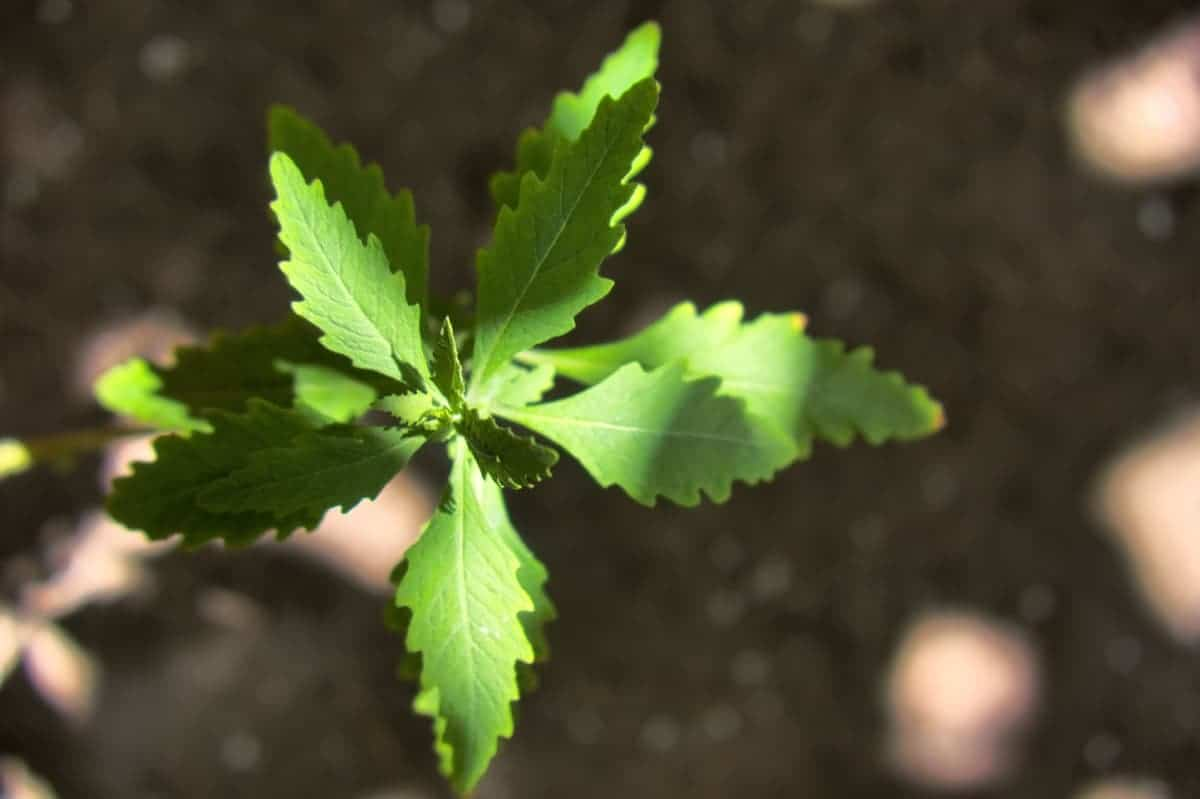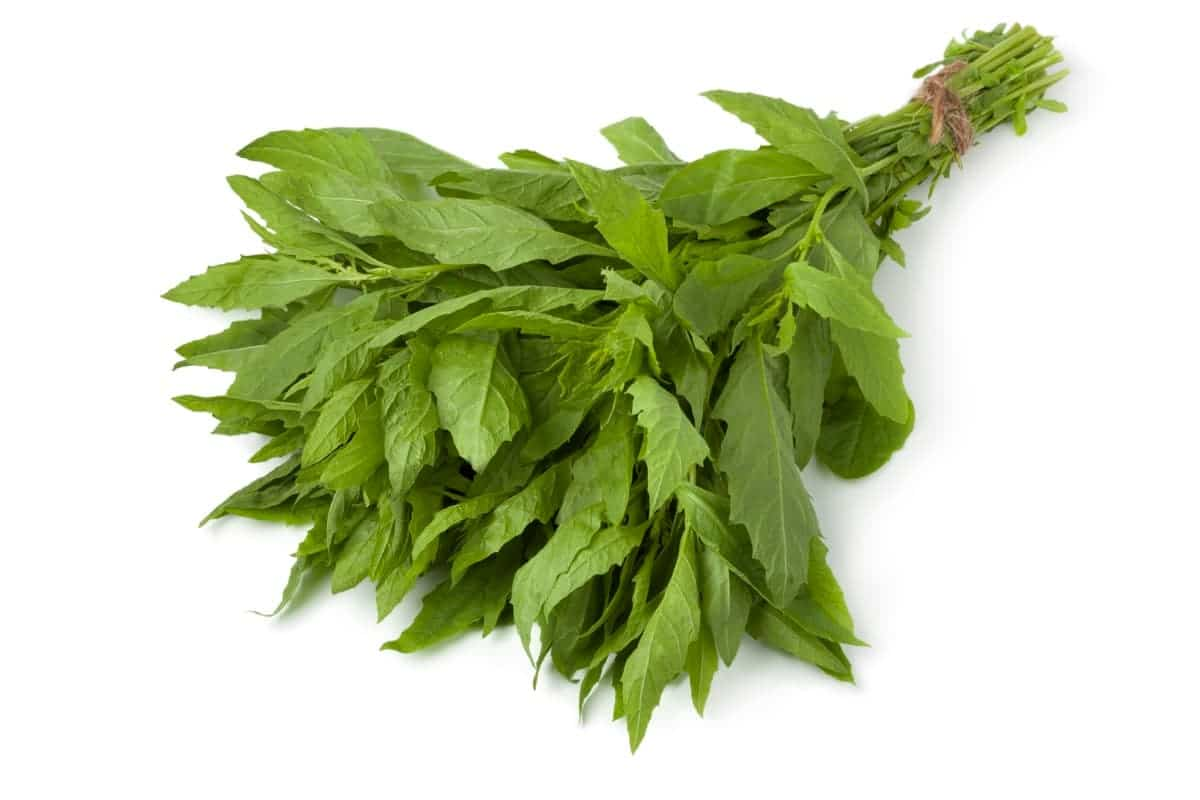Growing and caring for organic Epazote can be a rewarding experience for any gardener or food enthusiast. This versatile herb offers a unique flavor profile and numerous health benefits, making it a valuable addition to your garden and kitchen. This versatile herb adds a unique flavor to your dishes and offers several health benefits. Whether you plant it in your garden or grow it indoors, following the proper planting instructions and giving it the right care will ensure its successful growth.

How to Grow and Care for Organic Epazote
Step-by-step Guide to Planting Organic Epazote From Seeds
Before planting, prepare the soil by removing any weeds or debris from the area. Sow the Epazote seeds directly into the prepared soil, spacing them about 12 inches apart. Gently press them into the soil, ensuring good seed-to-soil contact. Cover the Epazote seeds lightly with a thin layer of soil or compost, no more than 1/4 inch deep.
Water the planted area thoroughly but gently to avoid washing away the seeds. Keep the soil moist throughout germination and plant establishment. Place a protective covering over the newly planted area, such as floating row covers or garden fabric, to provide shade and retain moisture during germination. Continue to water regularly, remembering that Epazote prefers slightly dry conditions once established.
Best Organic Soil Mix for Growing Epazote Indoors
When growing Epazote indoors, choosing the right soil mix is crucial for ensuring healthy growth and abundant harvests. Organic soil mixes provide the perfect balance of nutrients and moisture retention that this aromatic herb needs. Start by selecting a high-quality organic potting mix that is well-draining. Avoid using regular garden soil as it may become compacted in containers, hindering root development.
A mixture of compost, peat moss, and perlite or vermiculite can create an ideal growing medium for Epazote. Compost adds essential nutrients to the soil while improving its structure and water-holding capacity. Peat moss helps retain moisture without becoming waterlogged, preventing root rot. Perlite or vermiculite aids in drainage and aeration, promoting healthy root growth.
To further enhance the fertility of your organic soil mix, consider incorporating additional amendments like worm castings or aged manure. These natural fertilizers enrich the soil with beneficial microorganisms and micronutrients necessary for robust plant growth. Remember to regularly monitor your indoor Epazote plants’ watering needs, which may vary depending on humidity and container size. Water deeply, but allow the top layer of soil to dry before watering again.
In case you missed it: DIY Hydroponic Farming at Home: A Comprehensive Beginners Guide

Watering Schedule for Organic Epazote in Different Climates
Watering is a crucial aspect of caring for organic Epazote plants, and it’s important to adjust your watering schedule based on the climate in which they are growing. Epazote plants require more frequent watering in hotter climates due to increased evaporation. However, it’s essential not to overwater them as this can lead to root rot. For Epazote plants grown in cooler climates or during the winter season, you may need to reduce watering frequency. Monitor the soil’s moisture level by sticking your finger to determine when your Epazote plants need water.
If it feels dry at that depth, then it’s time for watering. It’s best to water deeply and ensure the entire root system receives adequate moisture. Additionally, using mulch around your Epazote plants can help retain moisture levels in the soil and reduce evaporation. Organic materials like straw or leaves make excellent mulching options. Remember that each plant has its unique needs when it comes to water requirements. Observing how your Epazote responds will allow you to fine-tune their watering schedule accordingly.
How to Propagate Organic Epazote From Cuttings
Propagating Epazote from cuttings is a great way to expand your herb garden and ensure a steady supply of this aromatic plant. Choose mature, disease-free stems that have at least three sets of leaves. Make a clean cut below a leaf node using clean, sharp scissors or pruning shears. Strip off the lower set of leaves from the stem, leaving only two or three pairs intact at the top. Dipping the cutting end in a rooting hormone powder can increase your chances of successful propagation.
Fill a pot with well-draining soil mix and create a hole using your finger or pencil. Insert the cutting and gently firm the soil around it. Place your potted cuttings in an area with bright but indirect light and maintain consistent moisture levels by misting regularly or covering them with plastic wrap to create humidity. Within several weeks, you should see new roots forming on your cuttings. Once well-established, you can transplant them into larger pots or your garden bed.
How to Care for Epazote in Containers
Caring for organic Epazote in containers is a rewarding and convenient way to grow this versatile herb. With the right care, your container-grown Epazote can thrive and provide you with an abundant supply of flavorful leaves. To start, choose a container at least 12 inches deep with adequate drainage holes. Fill the container with a potting mix enriched with compost or organic matter.
This will provide the necessary nutrients for your Epazote plant to flourish. Place the container in a sunny spot where it can receive at least six hours of direct sunlight daily. Epazote loves warmth and sunshine, so ensure it gets both. Water your container-grown Epazote regularly but avoid overwatering. Fertilize your Epazote monthly during its growing season using an organic liquid fertilizer or compost tea.
In case you missed it: How to Grow and Care for Organic Chervil: Planting Instructions

Pruning is essential for compact growth and encouraging bushier foliage on your Epazote plant. Regularly pinch back any leggy stems or remove damaged leaves to keep them tidy and healthy-looking. Harvesting should be done by cutting off individual branches or leaves as needed and not removing more than one-third of the plant’s overall foliage at once.
Companion Plants for Organic Epazote to Promote Growth
When it comes to growing organic Epazote, choosing the right companion plants can make all the difference in promoting healthy growth. You can create a thriving garden ecosystem by strategically selecting plants that complement and support Epazote’s needs. One excellent companion plant for Epazote is cilantro. Planting them together not only saves space but also encourages their mutual growth.
Another great choice is tomatoes. Tomatoes provide shade to Epazote during hot summer days while benefiting from its pest-repellent properties. Plus, the strong scent of Epazote helps deter insects that could harm tomato plants. Marigolds are also fantastic companions for organic Epazote. Their vibrant flowers attract pollinators like bees and butterflies, aiding cross-pollination and increasing overall plant productivity.
Additionally, planting basil alongside your Epazote can help repel pests like aphids and mosquitoes while adding a delightful aroma to your herb garden. Consider including beans or peas near your Epazote patch. Legumes are nitrogen-fixing plants that enrich the soil with this essential nutrient, providing an extra boost of nutrition for your herbs.
Tips for Pruning and Harvesting Organic Epazote Leaves
It’s important to know when to prune your Epazote. Generally, pruning should be done when the plant reaches about 6 inches in height. This will help promote bushier growth and prevent the plants from becoming leggy. When pruning, use clean and sharp gardening shears or scissors. This will minimize any damage or stress on the plants. Start by removing dead or yellowing leaves from the bottom of the plant.
For harvesting Epazote leaves, wait until the plant is fully established and has grown several sets of true leaves. To harvest, pinch off individual leaves as needed. This method allows for a continuous supply of fresh leaves throughout the growing season. Remember, it’s best to harvest moderately to not shock or weaken the plant too much. If you find yourself with an abundance of Epazote leaves, they can be dried for later use by hanging them upside down in a cool and dry location.
In case you missed it: How to Grow and Care for Organic Chives: Planting Instructions

Organic Fertilizers for Nourishing Epazote Plants Naturally
Natural fertilizers are the way to go when nourishing your organic Epazote plants. These eco-friendly alternatives provide essential nutrients without harmful chemicals or synthetic additives. One great option is compost, which is made from decomposed organic matter like kitchen scraps and yard waste. Adding compost to the soil around your Epazote plants enriches it with beneficial microorganisms and releases a slow and steady supply of nutrients. Seaweed extract is another fantastic organic fertilizer that promotes healthy growth in Epazote plants.
Packed with micronutrients, seaweed extract enhances root development, improves nutrient absorption, and increases resistance to pests and diseases. Additionally, you can consider using a bone meal or fish emulsion as natural fertilizers for your Epazote plants. Bone meal provides phosphorus for strong root development, while fish emulsion offers a balanced mix of nitrogen, phosphorus, and potassium. Remember to follow package instructions when applying these fertilizers and avoid over-fertilizing, as it can harm your Epazote plants.
Common Pests and Diseases of Organic Epazote and Their Management
One of the challenges organic Epazote growers face is dealing with pests and diseases that can harm their plants. While using chemical pesticides is not an option for organic gardeners, natural ways exist to manage these problems. A common pest that affects Epazote plants is aphids. These tiny insects feed on the sap, causing stunted growth and yellowing leaves.
To control aphids organically, you can introduce beneficial insects like ladybugs or lacewings into your garden. These predators will feast on the aphids, keeping their population in check. Another common problem is powdery mildew appears as a white powdery coating on the leaves. To prevent this disease, ensure adequate air circulation around your Epazote plants by spacing them properly. Additionally, avoid overhead watering as it creates a damp environment ideal for fungal growth.
Root rot can also be an issue for Epazote plants if they are overwatered or planted in poorly draining soil. To prevent root rot organically, ensure that your soil has good drainage and only water when necessary. By being vigilant and taking proactive measures such as proper spacing, introducing beneficial insects, providing good airflow, and practicing appropriate watering techniques, you can effectively manage pests and diseases without resorting to harmful chemicals.
In case you missed it: 14 Common Problems with Cherry Tomato Plants: Prevention, Treatment, and Solutions

How to grow Epazote indoors
Epazote is a versatile and easy-to-grow herb that can be cultivated indoors, allowing you to enjoy its unique flavor and health benefits all year round. Growing Epazote indoors provides a convenient source of this aromatic herb and adds a touch of greenery to your indoor space. Choose a well-draining pot or container with ample drainage holes to start growing Epazote indoors. Fill it with nutrient-rich soil and sow the seeds into the soil. Lightly water the seeds, keeping the soil moist but not overly saturated.
Place your Epazote plant in a sunny spot near a south-facing window where it gets at least six hours of sunlight daily. Consider using grow lights to supplement the lighting requirements if natural light is limited. Epazote thrives in warm temperatures between 21-29°C. Ensure that your indoor environment remains within this temperature range for optimal growth. Regularly check the soil and water moisture when needed; however, avoid overwatering as it can lead to root rot.
As your Epazote plant grows, pinch off any flowers or seed heads to encourage continuous leaf production. Harvesting should be done by gently plucking individual leaves from the plant for culinary use. With proper care and attention, fresh Epazote can be readily available in your home throughout the year. Growing herbs like Epazote indoors is practical and rewarding – enhancing your cooking endeavors and indoor ambiance.
Organic Methods for Controlling Weeds Around Epazote Plants
Regular hand weeding is one of the simplest ways to control weeds around your Epazote plants. Take some time each week to carefully remove unwanted plants near your Epazote. This method may require patience and persistence, but it allows you to target specific weeds without harming your Epazote or the soil.
Another effective organic weed control method is mulching. By layering a thick blanket of organic mulch around your Epazote plants, you can suppress weed growth by preventing weed seeds from germinating. Organic materials are great mulching options. Additionally, planting companion plants that naturally deter weeds can help protect your Epazote from unwanted intruders. For example, marigolds have been shown to repel certain weeds while attracting beneficial insects that prey on pests.
In case you missed it: How to Grow and Care for Epazote Herb in Your Garden

Conclusion
Growing and caring for Epazote can be a rewarding experience. This versatile herb adds unique flavors to your dishes and offers several health benefits. Following the planting instructions and providing proper care ensures your Epazote plant thrives in your garden. Remember to choose a suitable location with well-draining soil and ample sunlight. Plant the seeds or seedlings at the right time, keeping in mind the climate conditions of your region.
Maintain consistent moisture levels without overwatering, as Epazote prefers slightly dry soil. Regularly monitor for pests and diseases, taking necessary measures to protect your plants. Epazote is a versatile herb that adds an interesting twist to any dish and offers potential health benefits.
- How to Grow Tomatoes Organically at Home: A Comprehensive Guide
- Organic Gardening on a Budget: Low-Cost Methods and Materials
- Gongura Seed Germination and Planting Methods
- Cabbage Seed Germination and Selection
- Broccoli Seed Germination and Selection
- Asparagus Seed Germination and Variety Selection
- Seasonal Flower Gardening: Best Practices for Spring, Summer, Fall, and Winter
- How to Grow Hibiscus from Flower
- Plantation Ideas for Home Decoration: A Beginners Guide
- Flower Garden Designs and Layouts for Beginners
- Planting and Spacing Techniques in Papaya: A Beginner’s Guide
- Growing Gold: Essential Techniques for Planting Pineapples
- How to Make Kalanchoe Plant Bushy: Home Remedies and Solutions
- 11 Reasons Why Your Gardenia is Not Blooming: Home Remedies and Solutions
- Eco Elegance: The Guide to Designing a Drought-Tolerant Landscape
- Gardening on a Slope: Strategies for Hillside Landscaping
- Nourish and Flourish: Top Organic Mulches for Thriving House Plants
- Everything You Want to Know about Indian Mogra Flower: Discover Uses and Growing
- Green Thumb Success: Expert Tips for Cultivating Greenhouse Pumpkins All Year Round
- Maximize Growth & Flavor: The Ultimate Guide to Companion Planting in Herb Gardens
- How to Control Rhododendron Problems Naturally: Home Remedies and Organic Ways to Fix Them
- Natural Magic: The Remarkable Benefits of Cinnamon for Plants
- Best Steps to Revive Dying Tulip with Natural and Organic Treatment
- 10 Reasons Why Your Angel Trumpet is Not Blooming: Remedies and Treatment
- How to Fix Periwinkle Leaf and Flower-Related Problems: Natural Remedies and Solutions
- How to Fix Zinnias Leaf and Flower Problems: Discover Natural and Home Remedies
- Organic Steps to Induce Lemon Tree Flowers: A Comprehensive Guide
- Bloom Booster: Crafting the Perfect Homemade Bougainvillea Fertilizer
- Optimizing Growth: A Guide to Applying NPK Fertilizer for Potted Plants
- 10 Best Homemade Fertilizers for Rubber Plant: DIY Recipes and Application Method
- How to Boost Female Pumpkin Flowers: Effective Steps for More Flowers and High Yields
- Transform Your Indoor Garden: Top Benefits of Pink Salt for Houseplants
- 10 Best Homemade Fertilizers for Peacock Plants (Calathea): Easy DIY Guide
- Unlock Blooms: 9 Reasons Why Your Potted Chrysanthemum is Not Blooming
- 8 Reasons Why Your Potted Hibiscus is Not Blooming: Fix it with Simple Solutions
- Unlock Blooms: 9 Key Reasons Your Potted Frangipani Won’t Flower